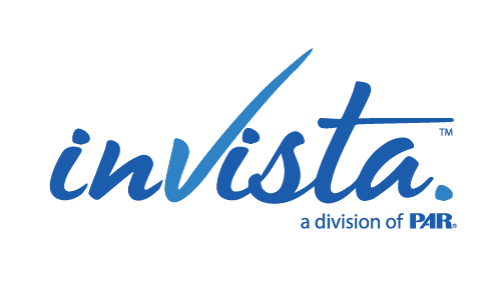More than 50 million workers left their jobs in 2022, according to federal data, breaking a record set the year prior. Further, Gallup’s 2022 State of the Global Workplace report states that only 21 percent of workers are actively engaged in the workplace, and employees who are not engaged cost $7.8 trillion in lost productivity. Why the mass exodus and disengagement? As expected, the pandemic was a substantial factor in leading many employees to start checking out or leaving their careers altogether. Since then, the workforce began the “Great Resignation,” with employees actively seeking to work for organizations that genuinely valued their growth and well-being, refusing to settle for workplaces that undermined their potential. With this in mind, how can leaders keep their teams engaged, productive, and more satisfied with their work—and less likely to quit?
Retain star employees
According to the Harvard Business Review (HBR), leaders must learn what their employees need to give them the right career growth opportunities. Giving employees a chance to voice their concerns and needs and offering regular feedback to discuss their successes and areas for improvement is the most valuable aspect of this process. HBR suggests scheduling regular one-on-one meetings with each team member, using this time to check in on their current projects. Managers should also ask what skills they are most comfortable with and which ones they want to develop.
However, some managers may find optimizing employee skills and potential daunting. They are often overwhelmed with priorities, and because of this, employee achievements and contributions can go unnoticed. Eventually, team members feel underappreciated, which may lead them to become less productive or leave the position. McKinsey revealed one of the main reasons employees leave a job is that they don’t feel valued by their organizations or managers. They added, “a primary reason for quitting is that employees do not have opportunities to learn new things or find their work interesting or challenging.” A Gallup-Amazon study found that:
- Forty-eight percent of workers in the U.S. would switch jobs if offered skills training opportunities.
- Sixty-five percent of employees believe employer-provided upskilling is crucial when evaluating a potential new job.
Utilizing the right performance assessment tools can take the burden off managers, helping them to identify areas of employee progress and limitations and distinguish top performers quickly and efficiently. And this type of recognition is invaluable. Consider these statistics:
- One survey found that 87 percent of company recognition programs highlight tenure.
- More than 91 percent of HR professionals believe that recognition makes employees more likely to stay, according to SHRM.
- One report finds that an employee who has received recognition is 63 percent more likely to stay at their job within the next three to six months.
- A SHRM/Globoforce survey revealed 68 percent of HR professionals agreed that employee recognition positively impacts retention, and 56 percent reveal that such programs also help with recruitment.
Optimize employee skills
Assessment or survey tools can also look at the deeper issues facing employees, assisting managers in learning what their teams need to succeed. They can help leaders identify the skills their employees want to learn or strengthen. And this kind of professional development can be a major boon for employers. For example, learning new skills or “upskilling” can help team members advance in their current roles and careers. Moreover, upskilling serves a dual purpose: it can also help fill open positions within a company. Training a current employee, who leaders already know and trust, is less expensive than recruiting, hiring, and training a new employee. Consider these statistics:
- It costs a company six to nine months of an employee’s salary to replace them on average.For an employee making $60,000 per year, that averages out to $30,000–$45,000 in recruiting and training costs, according to SHRM.
- For a larger 100-person organization that provides an average salary of $50,000, turnover and replacement costs can range from $660,000–$2.6 million per year, according to Gallup.
Once managers target the skills employees need to strengthen or learn, they must look for opportunities to help develop them. Career advancement seminars, executive workshops, and classroom-style training are strong foundations, but these should be part of a larger picture. The previous HBR article states, “Learning moments are a quicker way to move the needle when developing workplace skills. Engaging employees this way helps them step outside their comfort zones, practice, and build confidence. For example, in a one-on-one meeting, an employee might express frustration about a peer they struggle to communicate with. Managers can take this opportunity to create a learning moment. This might look like role-playing a tricky conversation or writing down an action plan.”
Reduce workplace burnout
The demands of work today exact a high price on employee well-being as workers try to cope with the rapid pace of technological change, the overnight disruption of entire industries by new upstarts, and the rise of uncertainty and volatility in the global market, according to MIT Sloan Management Review. Additionally, toxic work environments and long hours at the office are other factors significantly affecting workplace mental health and overall well-being. According to Berkley’s Great Good Magazine and Indeed some of the top causes of burnout include:
- Lack of recognition or reward
- Arduous workloads
- Social support is lacking, poor relationships
- Toxic work environment
- Perceived lack of control
So how stressed out are today’s employees? A Deloitte marketplace survey of 1,000 full-time U.S. professionals explores the toll of employee burnout. Consider these statistics:
- Ninety-one percent say that unmanageable stress or frustration impacts the quality of their work.
- Nearly 70 percent of professionals feel employers need to do more to prevent or alleviate burnout.
- Eighty-three percent say burnout negatively impacts personal relationships.
- Sixty-four percent say they are frequently stressed at work, even those passionate about their jobs.
The impact of burnout on employees’ mental and physical well-being is becoming increasingly evident in today’s workforce. But how is this toll affecting companies and organizations?
“Excessive stress at work is estimated to cost U.S. companies more than $300 billion a year in health costs, short and long-term disability, absenteeism, and poor performance,” according to UMass Lowell.
Accelerate revenue growth and workplace satisfaction
When managers do not help their team members manage stress, employee engagement and mental health may suffer. With this understanding, building better relationships must be the cornerstone of a healthy workplace—and regular check-ins and surveys of staff can help. These tools allow employees to share their perceptions and experiences effectively. More specifically, they can increase trust and reduce the stigma around stress and burnout because of their confidential nature. By utilizing assessments, employees can offer feedback that will guide investments in program awareness and elevate areas of concern. According to Indeed, team assessments also can yield breakthroughs in team management and reduce burnout by:
- Improving professional relationships. A team assessment can reveal how well employees interact with each other and how supported each team member feels.
- Increasing employee satisfaction. Managers can learn how team members feel about their workload, the organization’s values, and other issues. This helps boost morale.
According to one study, there are bottom-line benefits to workplace satisfaction and well-being; the author states, “When organizations institute positive, virtuous practices, they achieve higher levels of organizational effectiveness. This includes financial performance, customer satisfaction, and productivity.” Other research found that companies with high employee satisfaction significantly outperformed the overall stock market, earning 1.35 percent extra returns above the market—what researchers call “four-factor alpha”—over the eight-year period they studied. And two of the most convincing stats to invest in employees:
- According to Gallup’s State of the American Workforce report, companies with a workforce that is engaged are 21 percent more profitable.
- Organizations with highly engaged employees outperform their competitors by 147 percent and experience a 19.2 percent growth in operating income over a year.
Increase productivity
According to Indeed and Small Business Chronicle, to help keep teams on track and ensure they hit business goals, managers must be clear on how they measure employees’ abilities and areas for improvement. Below are top ways managers can increase productivity and keep teams performing to their full capabilities.
- Develop consistent standards. Implementing clear standards can help clarify expectations. By establishing clear expectations, leaders can unlock each team member’s full potential and pave the way for exceptional results. As a result, leaders may see higher quality work because employees have clear standards to achieve.
- Boosting employee motivation. Through assessments, leaders can provide feedback on their performance and set specific goals for them. When employees receive positive feedback and see themselves progressing toward goals and conquering them, it encourages them to keep working hard and performing well.
- Evaluating & clarifying goals. Employers can evaluate how well an employee reached their goals and provide feedback for future goals. Creating a system with continuous goal setting helps ensure employees improve and contribute to the organization’s overall mission.
- Utilizing feedback regularly. According to Indeed, limiting reviews to once or twice a year without having any other important career discussions in between can lead to performance management issues. To address this problem, providing multiple touchpoints regularly ensures consistency in reviewing employees, reducing negative team performance. These sessions or benchmarks can be more informal, occurring weekly, monthly, or quarterly. According to SHRM, continuous-feedback solutions improve collaboration, coaching, decision-making, agility, skills acquisition, employee engagement, and retention. Employees also get more comfortable receiving feedback about themselves and discussing their performance, alleviating some of the pressure associated with an annual review.
Improve team communication
Team members who lack communication skills can become frustrated with coworkers, workplace rules, and managers because their ideas and concerns need to be heard, according to Small Business Chronicle. This is why targeting communication issues before they start affecting employee productivity is essential to any business. Effective communication increases employee engagement, boosts morale, drives productivity, and prevents conflicts, according to BetterUp. It also creates an environment where employees want to improve a company’s profitability, customer satisfaction, and brand. Strong team communication also reduces turnover rates, notes Forbes.
With all the benefits of effective communication, how can leaders boost this much-needed skill? Small Business Chronicle suggests employee assessments can improve a company’s culture, communication, and overall performance. Plus, it provides valuable insights into employee engagement, commitment, and work ethic. The article reveals that team members who express themselves clearly and feel listened to tend to be more involved in their work. Conversely, those who need help communicating with coworkers will be less likely to reach their full potential and meet company expectations.
And the benefits of solid workplace communication aren’t just applicable to company employees. According to Indeed, effective communication also affects client relations. Organizations that communicate well with their customers or clients are more likely to build solid relationships and retain clients versus companies that don’t prioritize client communication. The article adds that workplaces that encourage employees to communicate their opinions and ideas tend to foster more innovation than those that don’t. Employees who feel empowered to speak up and think differently contribute meaningful ideas and strategies that help the organization as a whole.
Final take away
The “Great Resignation” is a true wake-up call for today’s leaders. The message is loud and clear: businesses need to invest in their employees. Performance assessments provide an effective way to make that happen. Used properly, these tools can improve understanding of personal and professional milestones. They help track employee objectives and tie those goals to engagement metrics so managers can define success at every stage of their career journey.
It is important for leaders to identify development opportunities and solve problems before they lead to team members leaving the organization. Keeping top performers engaged will ensure current employees stay with your team—paving the way for outstanding results, enhanced organizational impact, and accelerated financial health.
Learn how InVista has helped our clients decrease turnover and increase staff tenure.


Recent Comments